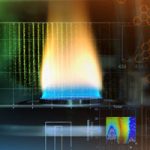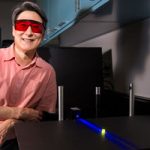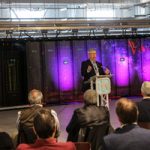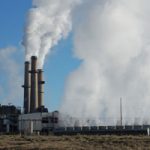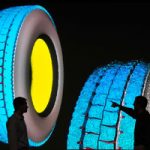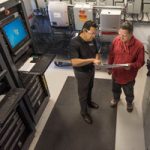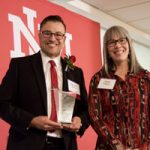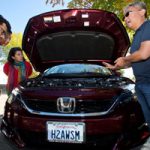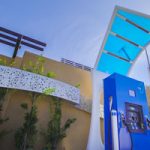Deconstructing deleterious soot
In most situations, breaking things apart isn’t the best way to solve a problem. However, sometimes the opposite is true if you’re trying to characterize complex chemical compounds. That’s what Sandia scientists Nils Hansen and Scott Skeen did to definitively identify soot precursor species in a flame.
The benefits of engineered light
The study of LED lighting is still in its infancy, according to Sandia researchers. "Engineered light," light intentionally controlled in time, space and spectral content, can reward human optics with better lighting, help regulate human health and productivity, efficiently stimulate plant growth and increase nutritional value, and more.
New computing center opens for business – ASTRA supercomputing business, that is
On Nov. 28, Sandia held a ribbon cutting ceremony to celebrate the official opening of the newly built facility to house its Astra supercomputer. The LEED gold-certified building features a 30-foot-high ceiling and is long and wide enough to house a basketball game and a crowd of spectators.
Sandia helps provide water data for secure energy supply
Electricity powers nearly two-thirds of all cooking in U.S. homes and most of us don't think about how much water it takes to produce that energy, but Sandia's Vince Tidwell does. His work focuses on the unique relationship between energy production and water use, referred to as the energy-water nexus, and he’s helped to map water availability, cost and use data for power plants.
CRADA boom spurs innovation, collaboration with Sandia Labs
Sandia signed 42 CRADAs in fiscal year 2018, more Cooperative Research and Development Agreements than in any previous year this century, sparking dozens of new collaborations and potential technological innovations. A CRADA is an agreement between a government agency and a nonfederal entity to work together on research and development.
CRADA enables resilient microgrid research between Sandia, Emera Technologies
Sandia and Emera Technologies have signed an 18-month Cooperative Research and Development Agreement to work on microgrids, small-scale versions of interconnected electric grids that locally manage energy storage and resources such as solar, wind and thermal systems, and which may connect to a larger host grid.
Kenneth Armijo wins UNM Zia award
Sandia mechanical engineer Kenneth Armijo, who leads bilingual family science events by night and researches solar energy and assists small businesses by day, received the prestigious Zia Award from his alma mater, the University of New Mexico.
H2AWSM: Cool cars, more fueling stations
Sandia/California celebrated the fourth annual National Hydrogen and Fuel Cell Day with an event on Oct. 8, highlighting the Labs' advanced research involving hydrogen fuel and how that research impacts transportation energy at the national level.
Some like it cryogenic
Sandia helped design the first generation of fueling stations for hydrogen-powered cars to be as safe as conventional gas stations. Now, a Sandia team is working to do the same for the next generation of hydrogen stations.
Majority rules when looking for earthquakes, explosions
Finding the ideal settings for each sensor in a network to detect seismic activity can be a painstaking and manual process. Sandia researchers are working to change that. They have developed an algorithm that automatically adjusts seismic activity detection levels for each network sensor, tuning out everyday vibrations such as traffic or footsteps to better detect earthquakes and explosions.
